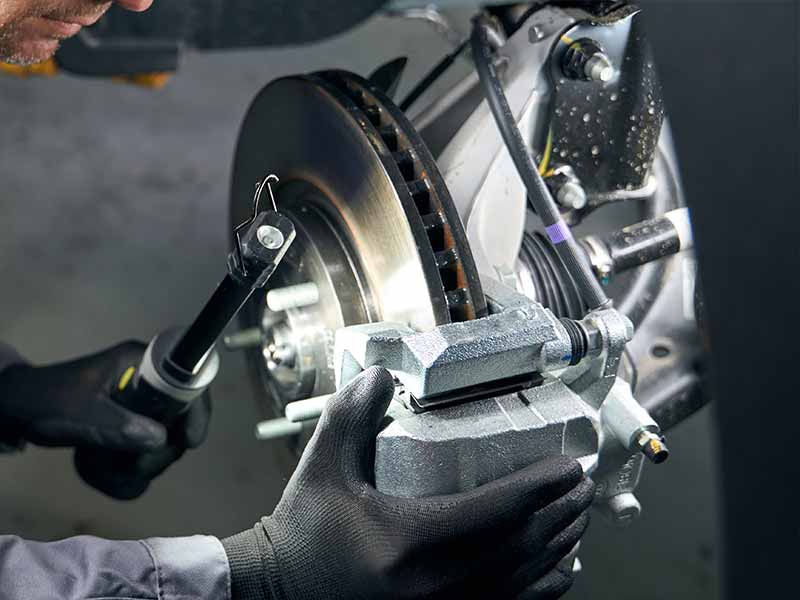Ever noticed that mysterious ABS light flickering on your dashboard and wondered what it’s trying to tell you? This little light is more than just an annoying light; it’s a crucial message from your vehicle’s Anti-lock Braking System, highlighting potential safety issues.
How To Turn Off ABS Light
Turning off the ABS light usually involves repairing part of the anti-lock braking system.
The ABS light comes on when there’s a potential issue, indicating problems like sensor malfunctions, electrical issues, or brake system anomalies.
In this article, we delve into the workings of the ABS system, explore common reasons why the ABS light illuminates, offer DIY troubleshooting steps, and discuss when professional help is needed. We also provide essential maintenance tips and advice on sensor care to help prevent future ABS light issues.
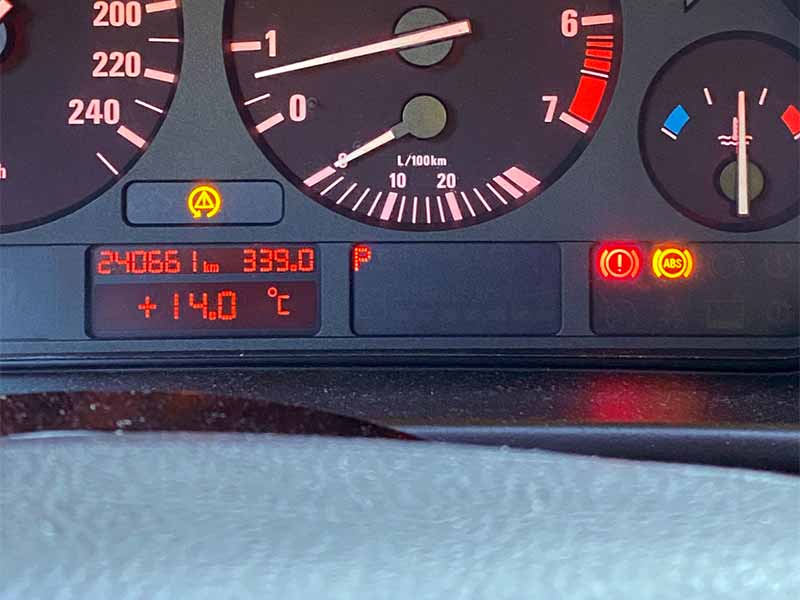
Understanding the ABS Light
Welcome to the world of ABS, short for Anti-lock Braking System, a critical component in your car or truck that ensures your safety on the road. When that little ABS light flickers on your dashboard, it’s more than just an annoyance—it’s your vehicle’s way of saying, “Hey, I need a bit of attention here!” But don’t worry, we’re here to demystify this for you.
What Does the ABS Light Mean?
- A Warning Signal: The ABS light is a warning indicator, a little nudge to tell you something might be off with your vehicle’s braking system.
- More Than Just Brakes: While ABS is primarily about preventing the brakes from locking up, the light could indicate a range of issues, not just with the brakes themselves.
Common Causes for ABS Light Activation
- Sensor-Related Issues: The ABS relies heavily on wheel speed sensors. If these sensors are damaged, dirty, or malfunctioning, they might send incorrect signals, causing the ABS light to illuminate.
- Electrical Problems: Issues such as loose connections, blown fuses, or wiring problems can disrupt the ABS system’s functionality.
- Faulty ABS Module: The ABS computer module, responsible for interpreting signals from the sensors and controlling the braking system, can sometimes fail.
- Brake System Problems: Low brake fluid levels, worn brake pads, or other brake system issues can trigger the ABS light.
- Damaged Stator Ring: A damaged or dislocated stator ring, which works in conjunction with the wheel sensor, can cause false readings.
- Hydraulic Pressure Loss: Losing hydraulic pressure in the brake system, either due to low brake fluid or other issues, can activate the ABS light.
- Damaged Hydraulic Circuits: If the hydraulic circuits, integral to the ABS function, are damaged, this can lead to ABS light issues.
Each of these causes warrants a closer look, and in some cases, professional help. But before you head to the mechanic, there are a few things you can check yourself.
For a deeper dive into the relationship between the ABS and traction control systems, and how they work together to keep you safe on the road, don’t miss our detailed exploration on ABS and Traction Control Light On.

How an ABS System Works
Delving into the workings of an Anti-lock Braking System (ABS) is like uncovering a vital component of your vehicle’s safety mechanism.
The Mechanics Behind ABS
- Wheel Speed Sensors: Positioned near each wheel, these sensors play a pivotal role. They monitor the speed of each wheel, relaying this information back to the car’s computer system.
- The Brain – ABS Computer Module: This module acts as the system’s brain. It processes the data from all wheel sensors.
ABS in Action
- Detecting Skid: When you brake hard, the ABS system instantly checks if any wheels are losing traction and beginning to skid.
- Pulse Braking: If a skid is detected, the ABS system momentarily reduces brake pressure to the affected wheel. This happens in rapid pulses, allowing the wheel to regain traction.
- Maintaining Control: By preventing the wheels from locking up, ABS ensures that you maintain steering control during emergency braking, reducing the risk of skidding or sliding.
The Components of ABS
- Wheel Speed Sensors: Vital for detecting each wheel’s speed and signaling if any wheel starts to skid.
- ABS Control Module: Processes the data and controls the braking action on each wheel.
- Hydraulic Valves and Pump: These components adjust the brake fluid pressure in response to the control module’s commands, enabling the pulsing action that prevents wheel lockup.
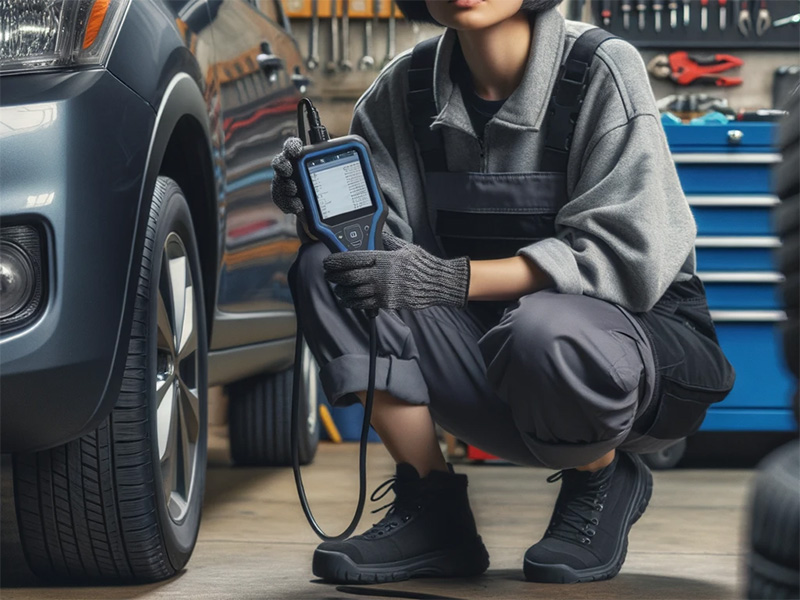
DIY Troubleshooting and Resetting
Now that you’re a bit more familiar with what your ABS light is trying to tell you, let’s roll up our sleeves and get into some DIY troubleshooting. You don’t always need fancy tools or a trip to the mechanic to get to the bottom of this.
Simple Steps to Reset Your ABS Light
Sometimes, all you need to do is reset the ABS light. Here’s how you can do it without a scan tool:
- Turn Off the Ignition: Start by turning off your vehicle completely. This might seem basic, but it’s like giving your car a quick nap before sorting out its issues.
- Disconnect the Battery: Carefully disconnect the battery, starting with the negative terminal. This helps reset the car’s computer system, which can, in turn, reset the ABS light.
- Wait It Out: Patience is key. Wait for about 10-15 minutes. This waiting period allows the system to reset itself.
- Reconnect the Battery: Reattach the battery, starting with the positive terminal. Make sure the connections are secure.
- Start Your Vehicle: Fire up the engine. If the issue was minor, the ABS light should stay off. If it comes back on, there might be a deeper issue that needs professional attention.
When to Seek Professional Help
- Persistent ABS Light: If the ABS light remains stubbornly lit after you’ve tried resetting it, it’s time to call in the experts.
- Performance Issues: Notice any changes in how your car drives? If it feels different, especially in the braking system, don’t delay in seeking professional help.
- Unfamiliar Sounds or Smells: Anything out of the ordinary, like strange noises or smells, particularly when braking, warrants a professional diagnosis.
And if you’re curious about what to do when your ABS warning stays on, make sure to explore our comprehensive guide on What to Do If Your ABS Warning Stays On, where we delve into the nitty-gritty of diagnosing persistent ABS issues.

Professional Diagnosis and Repair
When your DIY attempts don’t seem to do the trick, and that ABS light is still glowing like a stubborn firefly, it’s time to consider professional diagnosis and repair.
Typical Processes in Professional ABS Repair
- Diagnostic Test: This is where the journey begins. Mechanics use advanced scan tools to read the error codes from your car’s computer system.
- Physical Inspection: A thorough check of the ABS sensors, brake pads, and related components follows. Sometimes, the issue is visible and straightforward.
- Repair or Replacement: Depending on the diagnosis, parts may need repair or replacement. This could range from cleaning a sensor to replacing a faulty ABS module.
Potential Costs
- Varied Pricing: The cost to fix an ABS light issue can vary widely. It depends on the nature of the problem and the parts that need replacing.
- Labor Costs: Don’t forget that labor costs can be a significant part of your bill. Complex issues take more time to fix, which means higher costs.
Making an Informed Decision
- Get a Second Opinion: If you’re unsure about a diagnosis or quote, it’s always okay to seek a second opinion.
- Warranty and Quality Parts: Ensure that any replaced parts come with a warranty and that your mechanic uses quality components.
For an in-depth look into the various factors affecting the cost of ABS light repair and tips on saving money while ensuring quality repairs, our article on How Much Does It Cost to Fix ABS Light? offers valuable insights and practical advice.
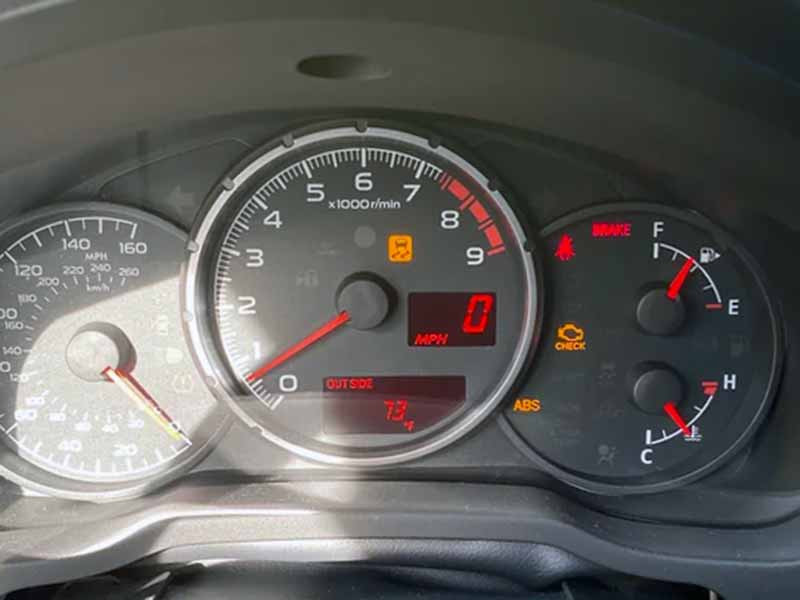
Maintenance Tips to Prevent ABS Light Issues
Keeping your ABS light from popping up doesn’t have to be a puzzle. Regular maintenance can go a long way in preventing issues with your vehicle’s anti-lock braking system.
Regular Brake System Checks
- Brake Pad Inspection: Regularly check your brake pads for wear and tear. Worn brake pads not only affect your car’s braking efficiency but can also trigger the ABS light.
- Brake Fluid Levels: Keep an eye on your brake fluid level. Low levels can lead to air entering the ABS module, causing the light to come on.
- Overall Brake System Health: Periodic checks of the entire brake system, including rotors and calipers, are essential for ensuring everything is in top shape.
ABS Sensor Maintenance
- Clean Your ABS Sensors: ABS sensors can accumulate dirt and debris, leading to false readings. Cleaning them periodically can prevent this.
- Check for Damage: Look out for any visible damage to the sensors or wiring, especially after a rough ride or an off-road adventure.
Driving Habits
- Smooth Driving: Aggressive driving can put unnecessary strain on your braking system. Smooth, gentle braking is not only safer but also better for your car’s overall health.
- Avoid Waterlogged Areas: Driving through deep water can affect your ABS sensors. If unavoidable, check your sensors afterwards.
When to Seek Professional Maintenance
- Regular Service Appointments: Even if you’re comfortable with basic maintenance, a professional check-up is invaluable. They can spot potential issues that you might miss.
- Post-Repair Checks: After any ABS-related repairs, have a professional ensure everything is properly calibrated and functioning.
For more detailed maintenance tips and insights into keeping your ABS system in top condition, our comprehensive guide on Preventive Maintenance for ABS Systems is your go-to resource.
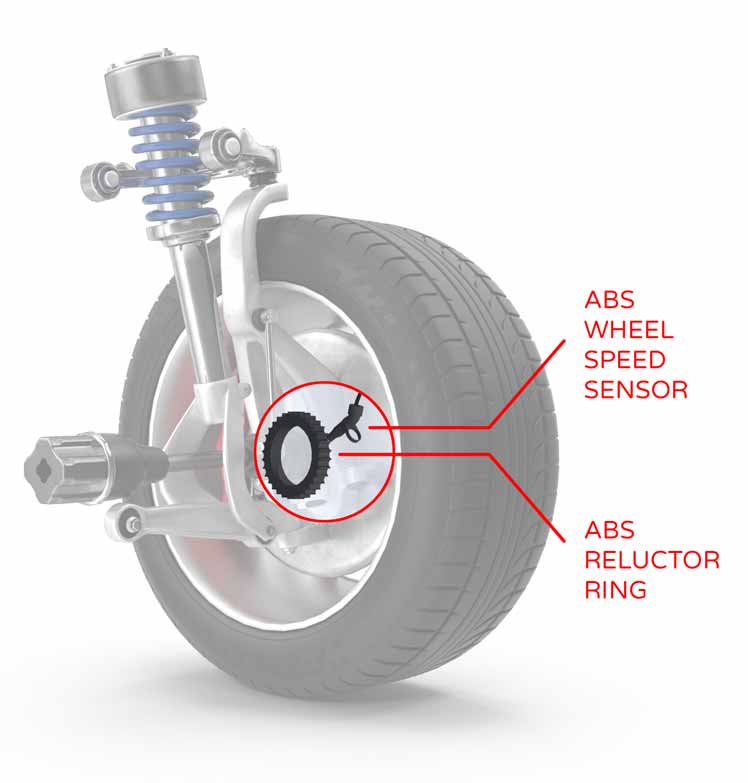
Location and Care of ABS Sensors
Understanding the whereabouts and proper care of your vehicle’s ABS sensors is like knowing the secret spots in your garden where the best flowers bloom.
Where to Find ABS Sensors
- Wheel Hubs: Generally, ABS sensors are located at each wheel hub. They monitor the speed of each wheel and send data to the ABS system.
- Under the Hood: Sometimes, additional sensors are connected to the drivetrain or transmission, providing more data points for the ABS system.
Basic Care for ABS Sensors
- Regular Cleaning: Dirt, debris, and road grime can interfere with the sensors’ ability to accurately read wheel speed. Regular cleaning helps maintain their accuracy.
- Inspection for Damage: Look out for any signs of physical damage or wear, such as cracked casings or frayed wires. This is especially important after driving in harsh conditions.
Preventive Measures
- Gentle Driving Over Rough Terrain: Rough roads can jostle and damage ABS sensors. Drive carefully over potholes or uneven surfaces.
- Avoiding Deep Water: Submerging the sensors in water, especially if it’s dirty or contains road salt, can lead to corrosion or other damage.
Knowing When to Replace ABS Sensors
- Consistent ABS Light Activation: If your ABS light frequently comes on, it might indicate that a sensor is failing.
- Erratic Braking Behavior: If you notice unusual braking patterns, such as the brakes engaging abruptly, it could be a sign of sensor issues.
- Professional Diagnosis: To confirm sensor issues, a professional diagnostic test can pinpoint if a replacement is needed.
Resources
Below are some links you may find helpful when learning about tires:
- How ABS Works and What it Does – Edmunds
- Understanding Your Car’s Braking System – Consumer Reports
- Common Reasons for ABS Light Activation – The Drive
Final Thoughts
The ABS light is a critical dashboard warning that should never be ignored. It can indicate a variety of issues, from sensor problems to more complex system malfunctions.
Regular maintenance, including checking brake fluid levels and sensor care, can prevent many of these issues.
While some ABS light causes can be addressed with DIY methods, others require professional diagnosis and repair.
Good luck and happy motoring.
